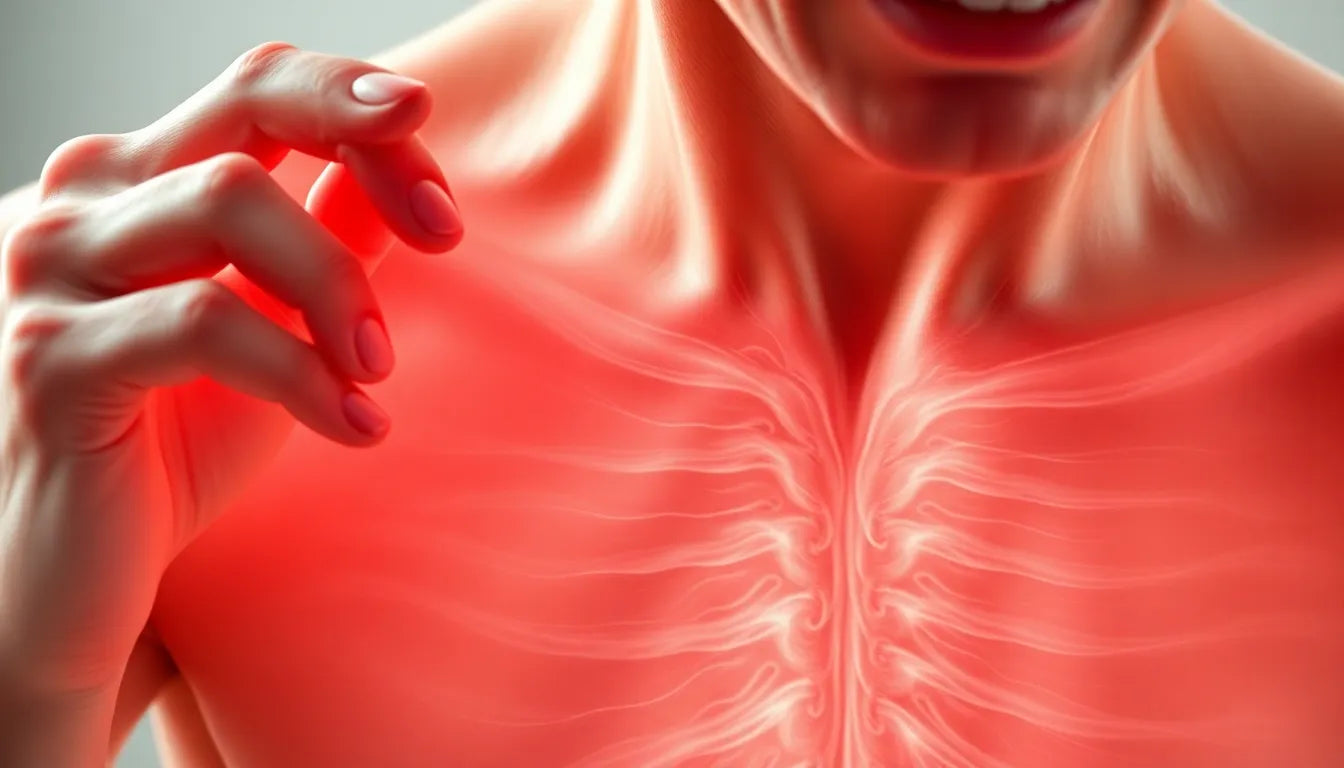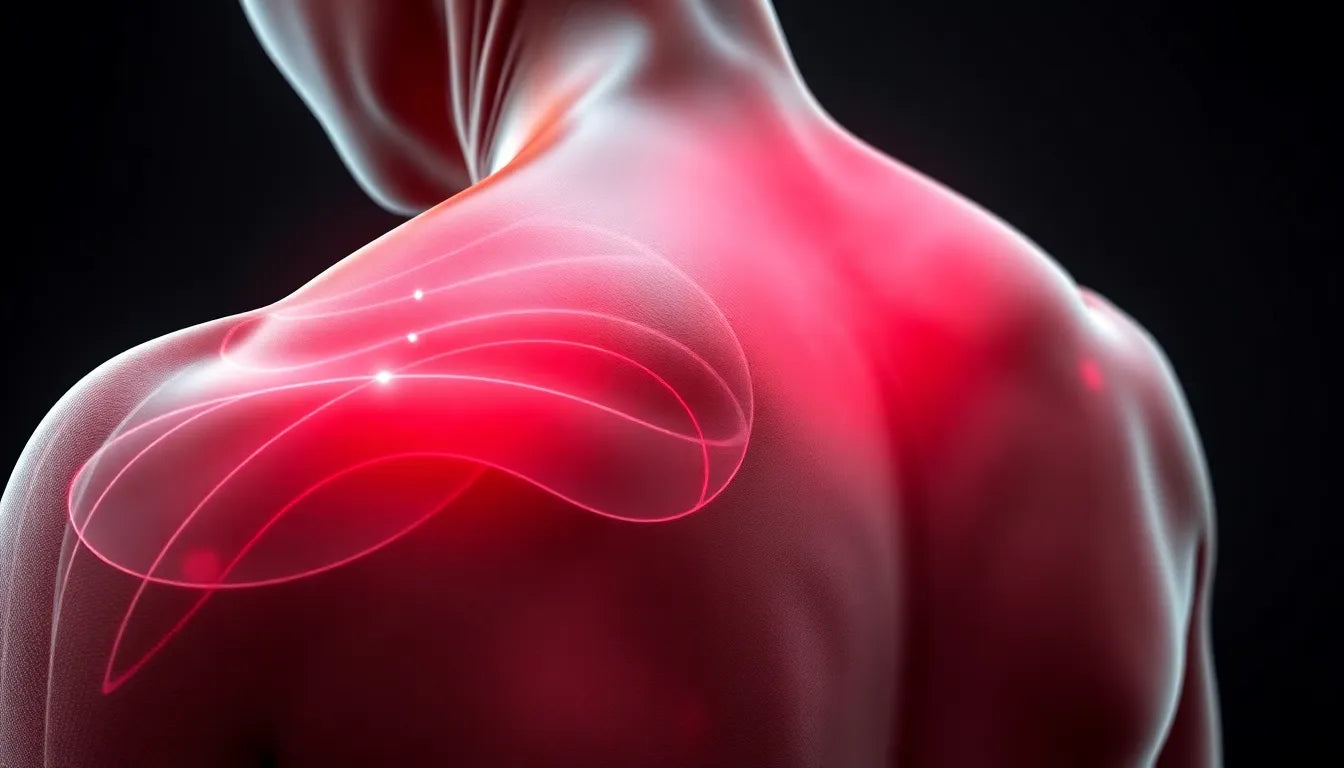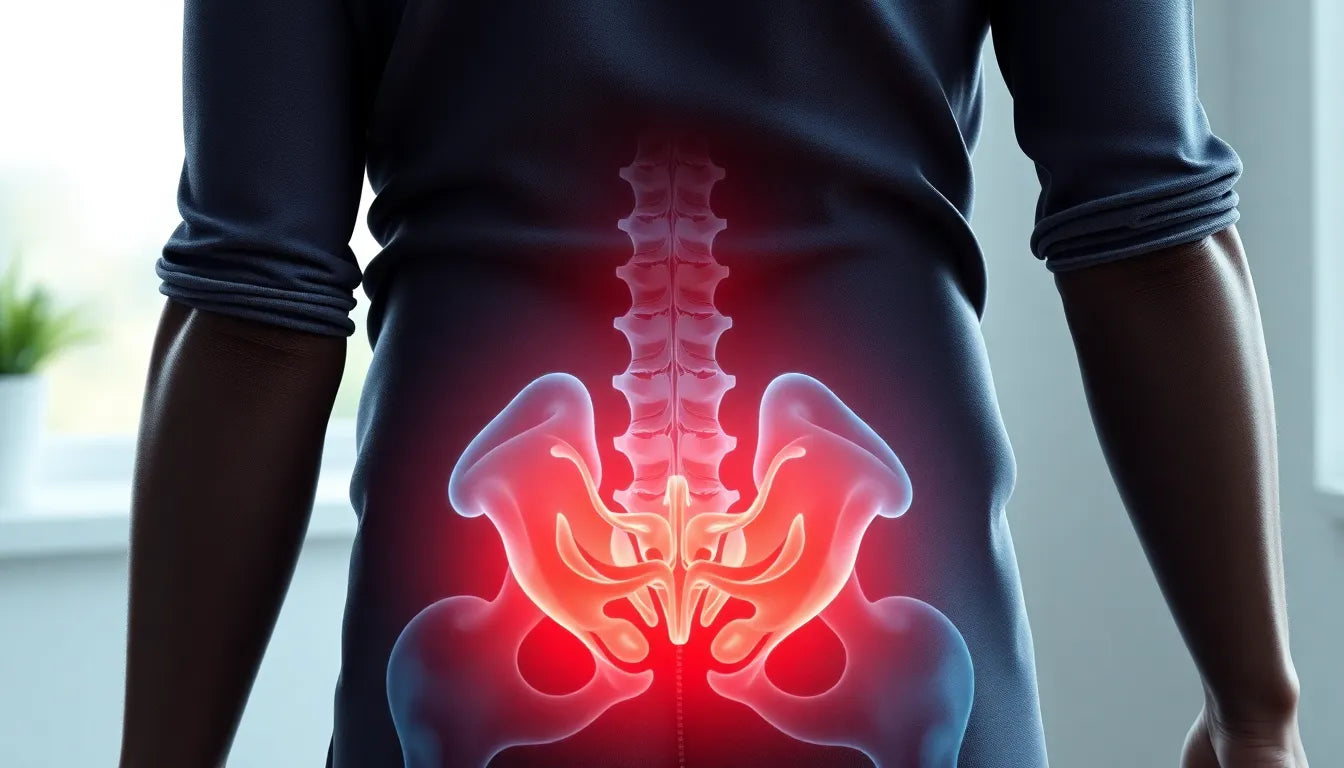Smerter nederst i maven og lænden kan være en frustrerende og bekymrende oplevelse for mange. Det er ikke ualmindeligt, at smerter opstår samtidigt i disse områder, hvilket ofte skyldes de fælles nervebaner og den komplekse måde, vores kroppe opfatter smerte på. Når smerter opstår i et område, kan de ofte føles i et andet, et fænomen kendt som refereret smerte. Dette kan gøre det vanskeligt at identificere den præcise årsag til ubehaget.
Der er en bred vifte af potentielle årsager til smerter nederst i maven og lænden. De kan variere fra relativt harmløse tilstande som muskelspændinger eller menstruationssmerter til mere alvorlige tilstande som nyresten eller infektioner. Det er vigtigt at forstå, at smerter i disse områder kan være et symptom på mange forskellige tilstande, og derfor er en korrekt diagnose afgørende for at finde den rette behandling.
Almindelige årsager til smerter nederst i maven og lænden
Flere almindelige årsager kan føre til smerter i både maven og lænden. Muskulære problemer som lumbago eller diskusprolaps er ofte skyldige, især hvis smerten er forbundet med fysisk aktivitet eller pludselige bevægelser. Disse tilstande kan føre til smerter, der stråler fra lænden til maven eller omvendt.
Gastrointestinale problemer som irritabel tyktarm (IBS) eller forstoppelse kan også forårsage ubehag i maven, som nogle gange kan stråle til lænden. IBS er kendetegnet ved kolikagtige smerter og ændringer i afføringsmønstre, mens forstoppelse ofte fører til en følelse af oppustethed og ubehag, som kan påvirke nedre ryg.
Urininfektioner, herunder blærebetændelse, kan også medføre smerter i disse områder. En infektion kan sprede sig til nyrerne, hvilket forårsager alvorlige smerter i lænden. Det er vigtigt at være opmærksom på symptomer som feber eller ændringer i urineringsmønstre, som kan indikere en mere alvorlig infektion.
For kvinder kan gynækologiske problemer som menstruationssmerter også være en almindelig årsag til smerter nederst i maven og lænden. Menstruationssmerter kan ofte stråle til lænden og forårsage betydeligt ubehag i løbet af cyklussen.
Formålet med denne artikel er at hjælpe dig med at forstå de mulige årsager til dine smerter og finde måder at lindre dem på. Ved at få en bedre forståelse af, hvad der kan forårsage dine symptomer, kan du tage informerede skridt mod at finde lindring og forbedre dit velbefindende.
Quick triage and red flags: when to seek immediate help
While many causes of pain in the lower abdomen and lower back can be managed with self-care, there are certain symptoms that should not be ignored and require immediate medical attention. Recognizing these red flags can be crucial in preventing more serious health complications.
- Fever with flank pain: This combination of symptoms can suggest a kidney infection, which may require urgent medical intervention.
- Sudden changes in urination or bowel movements: These symptoms could indicate cauda equina syndrome, a rare but serious condition that requires emergency treatment.
- Persistent weight loss, blood in stool/urine, or severe acute pain: Such symptoms could be indicative of appendicitis or other serious gastrointestinal issues.
Common causes and symptoms of pain in the lower abdomen and lower back
Musculoskeletal causes
Musculoskeletal issues are a common cause of pain in the lower back and abdomen. Understanding the specific characteristics of these conditions can help in identifying the underlying problem.
- Lumbago: Often resulting from strain or sudden movements, lumbago is characterized by stiffness and pain in the lower back. It can be triggered by activities that involve bending or lifting.
- Disc herniation: This condition occurs when a disc in the spine protrudes and presses on nearby nerves, leading to radiating pain and numbness, often extending to the legs.
- Facet joint syndrome: Pain from facet joints can be exacerbated by actions such as coughing, sneezing, or taking deep breaths, and can cause significant discomfort in the lower back.

Lumbar support belt
Provides adjustable compression and support for lower back pain relief, ideal for daily activities.
Gastrointestinal causes
Gastrointestinal disorders can also lead to abdominal and back pain, often accompanied by other digestive symptoms.
- Irritable Bowel Syndrome (IBS): Characterized by abdominal pain, bloating, and changes in bowel habits, IBS symptoms can be managed by identifying and avoiding triggers, such as certain foods or stress.
- Constipation: This condition can cause significant discomfort and is often associated with a feeling of fullness and pain that may extend to the lower back.
Urinary and renal causes
Problems with the urinary system can manifest as pain in the lower abdomen and back, requiring careful attention to symptoms.
- Urinary Tract Infection (UTI): Symptoms include a frequent urge to urinate, pain during urination, and lower abdominal discomfort. If left untreated, a UTI can progress to a kidney infection.
- Kidney stones: These can cause intense pain that radiates from the back to the groin, often described as one of the most painful experiences.
Gynecological causes
For women, certain gynecological conditions can result in pain that affects both the abdomen and the lower back.
- Menstrual pain: Often radiates to the lower back and can be accompanied by cramping and discomfort throughout the menstrual cycle.
- Endometriosis: This condition can cause chronic pain and is often confused with IBS due to overlapping symptoms.
Self-care strategies and when to consult a healthcare professional
Self-treatment options
Many cases of pain in the lower abdomen and back can be managed with simple self-care techniques, which can provide significant relief.
- Active rest and gradual movement: Engaging in gentle activities can help reduce muscle stiffness and improve mobility.
- Heat therapy: Applying a heating pad or taking warm baths can soothe muscle tension and alleviate pain.
- Over-the-counter pain relief: Medications like ibuprofen or acetaminophen can be effective for managing pain, but should be used as directed.
- Home remedies for constipation: Increasing fiber intake and staying hydrated can help alleviate digestive discomfort.
When to seek professional help
While self-care can be effective for many, there are situations where consulting a healthcare professional is necessary.
- If symptoms persist or worsen despite self-care efforts.
- If you experience any of the red flags mentioned earlier.
- If you suspect a chronic condition that requires medical evaluation and treatment.
Understanding the potential causes of pain in the lower abdomen and back is the first step towards finding effective relief. By recognizing symptoms and knowing when to seek help, you can take proactive steps to manage your health and well-being effectively.
ergonomic advice and exercises for relief
For those experiencing pain in the lower abdomen and lower back, implementing ergonomic strategies and exercises can be highly beneficial. Proper ergonomics can help reduce strain on the lower back, while targeted exercises can improve flexibility and strength, aiding in pain relief.

Men's Posture Shirt™ - Black
Patented shirt activates muscles and can relieve pain and tension for improved daily posture.
When sitting for extended periods, ensure your chair supports the natural curve of your spine. Adjust the chair height so your feet rest flat on the floor and your knees are level with your hips. Taking frequent breaks to stand and stretch can also prevent tension buildup.
exercises for mobility and core stability
- Hip and lower back mobility exercises: Gentle stretches such as knee-to-chest, cat-cow, and pelvic tilts can enhance flexibility and relieve tension in the lower back.
- Core strengthening routines: Incorporating exercises like planks and bridges can help stabilize the core muscles, providing better support for the lower back.
when further investigation is necessary
While many cases of pain can be managed at home, there are instances where further medical evaluation is warranted. Persistent pain or symptoms that do not improve with self-care may indicate a more serious underlying condition that requires professional attention.
- Persistent lower back pain beyond 6-12 weeks: If pain continues without improvement, it may be necessary to consult a healthcare provider for a comprehensive evaluation.
- Radiating pain with neurological signs: Symptoms such as numbness, tingling, or weakness in the legs may suggest a disc herniation and require medical assessment.
- Recurrent UTIs or IBS symptoms persisting over 3 months: Ongoing urinary or gastrointestinal issues should be evaluated to rule out chronic conditions or infections.
Frequently Asked Questions
Why do I experience lower back pain during menstruation?
Menstrual pain often leads to lower back discomfort due to hormonal changes and muscle contractions in the uterus, which can radiate to the back.
Can constipation cause lower back pain?
Yes, constipation can lead to lower back pain as the buildup of stool in the intestines can cause pressure and discomfort in the lower abdominal and back regions.
How can I differentiate between UTI, kidney stones, and back strain?
UTI symptoms typically include a burning sensation during urination and frequent urges to urinate. Kidney stones often cause severe, radiating pain from the back to the groin. Back strain usually results from physical activity and manifests as localized back pain without urinary symptoms.
What exercises can help with lower back and abdominal pain?
Exercises such as gentle stretching, core strengthening routines, and mobility exercises for the hips and lower back can alleviate pain and improve flexibility.
When should I worry about lower abdominal and back pain?
Seek medical attention if you experience severe pain, symptoms that persist despite self-care, or any red flags such as fever, unexplained weight loss, or changes in bowel or urinary habits.


















